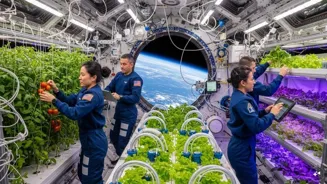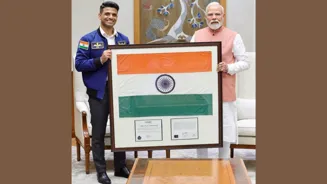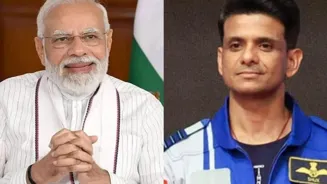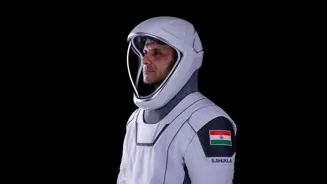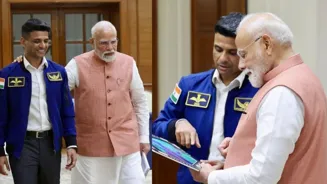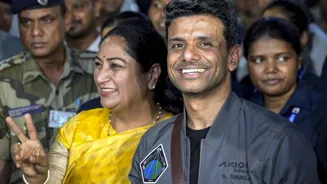During the interaction, Shukla spoke about his many experiments aboard the ISS, including growing crops in space. For those who aren’t aware, Shukla turned farmer in space — growing ‘moong’ and ‘methi’ seeds in petri dishes aboard the ISS. Speaking on the same to Modi, Shukla said that food remains a major challenge aboard space stations due to limited space and
A wonderful conversation with Shubhanshu Shukla. Do watch! @gagan_shux https://t.co/C3l2TNnMpo
— Narendra Modi (@narendramodi) August 19, 2025
This got us wondering — how do plants grow in space? And why is it important for space travel?
Shukla turns space farmer
As part of his now successful Axiom-4 mission, Shukla conducted various experiments in space, including growing plants on board the ISS. In fact, this was the most crucial of his seven experiments.
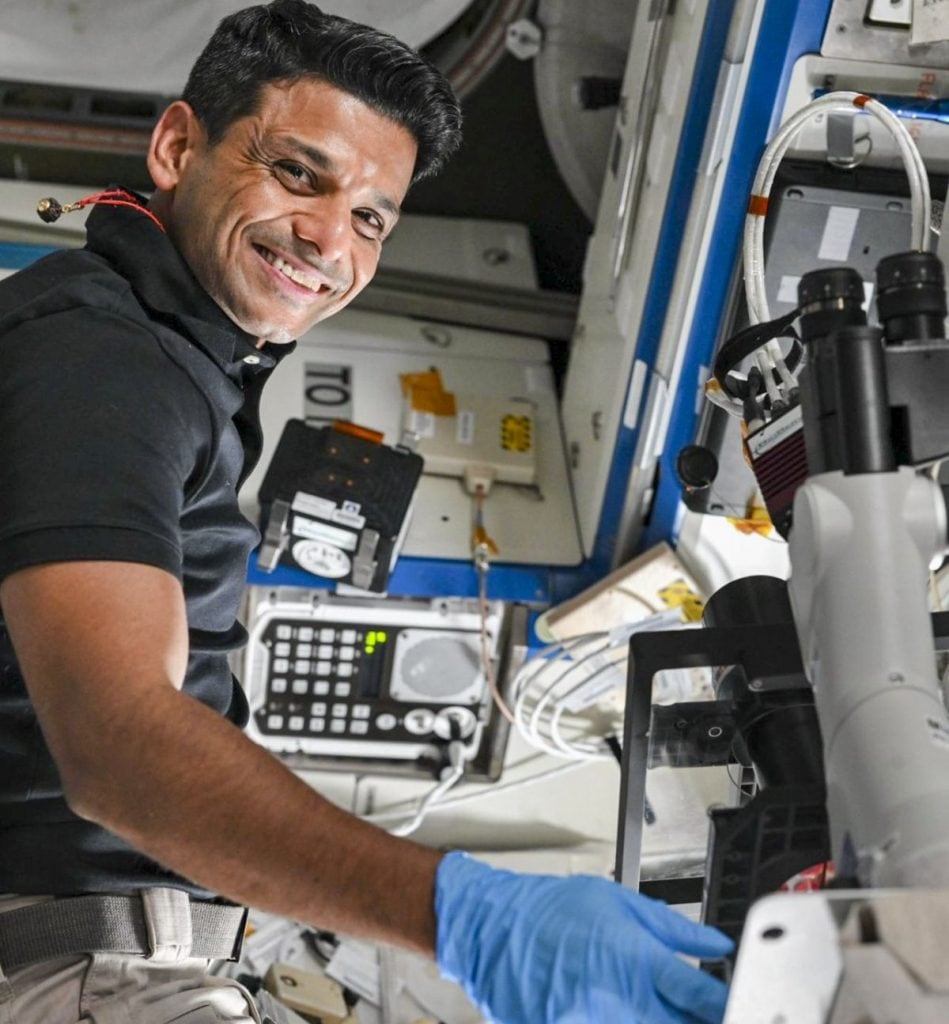
Indian
astronaut Shubhanshu Shukla aboard the International Space Station planting moong and methi seeds. File image/PTI
As part of the mission, he planted moong and methi seeds in petri dishes and kept them in a storage freezer. This activity was part of a study into the influence of microgravity on germination and early plant development. These seeds will be cultivated over multiple generations after their return to earth, with researchers looking into changes in their genetics, microbial ecosystems and nutritional profiles.
Recalling this experiment, he told PM Modi in Monday’s discussion, “Food is a big challenge on space station. Many experiments are ongoing to grow food in space. We did micro-gravity research — it could solve food security problems on earth too.”
Growing food in space
But Shukla isn’t the first astronaut to try his hand at farming on board the ISS. Astronautshave been growing plants in space on a fairly small scale. In fact, in 2014, Nasa, America’s space agency, launched the Vegetable Production System,
The purpose of Veggie is to help Nasa study plant growth in microgravity, while adding fresh food to the astronauts’ diet and enhancing happiness and well-being on the orbiting laboratory.
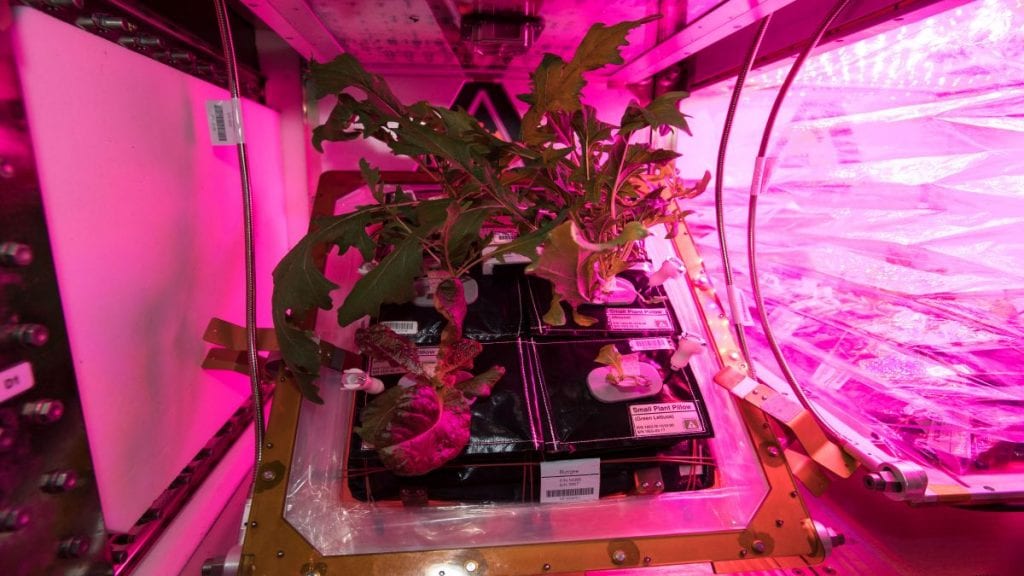
Mixed greens (mizuna, red romaine lettuce and tokyo bekana cabbage), grown in Nasa's Veggie facilities. File image/AFP
To date, Veggie has successfully grown a variety of
But how are these plants grown?
There are two ways: one is through hydroponics — the
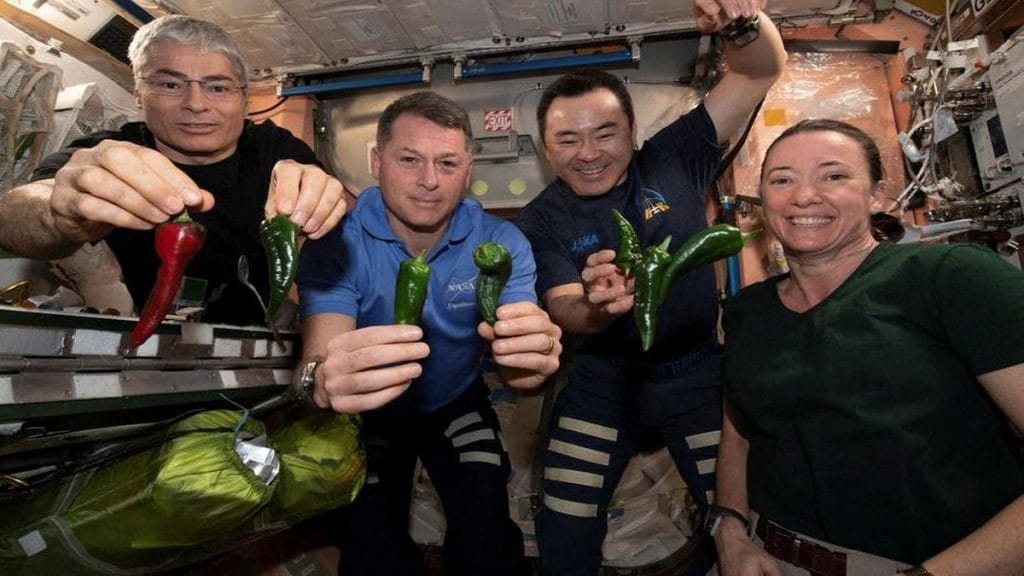
International Space Station astronauts Mark Vande Hei, Shane Kimbrough, Akihiko Hoshide and Megan McArthur, pose with peppers grown in space for the first time aboard the orbiting laboratory platform for the Plant Habitat-04 investigation. File image/Reuters
In Nasa’s Veggie
Earlier, this year, even Isro made strides in space farming with the CROPS box, which is like a mini-greenhouse. It is an experimental module designed to develop Isro’s capabilities for growing and sustaining plants in space. It has a soil-like medium, water, sunlight-mimicking lights, and Earth-like air.
Challenges in growing food in space
However, growing plants in space is no child’s play and goes beyond just having a green thumb.
Firstly, astronauts have to contend with microgravity. In a zero-gravity environment, plants struggle to orient themselves properly, as their natural response to gravity doesn’t function the same way. Essentially, the plant doesn’t have the same instinct for the roots to grow downwards and the stems to grow upwards, which can affect development and nutrient absorption.
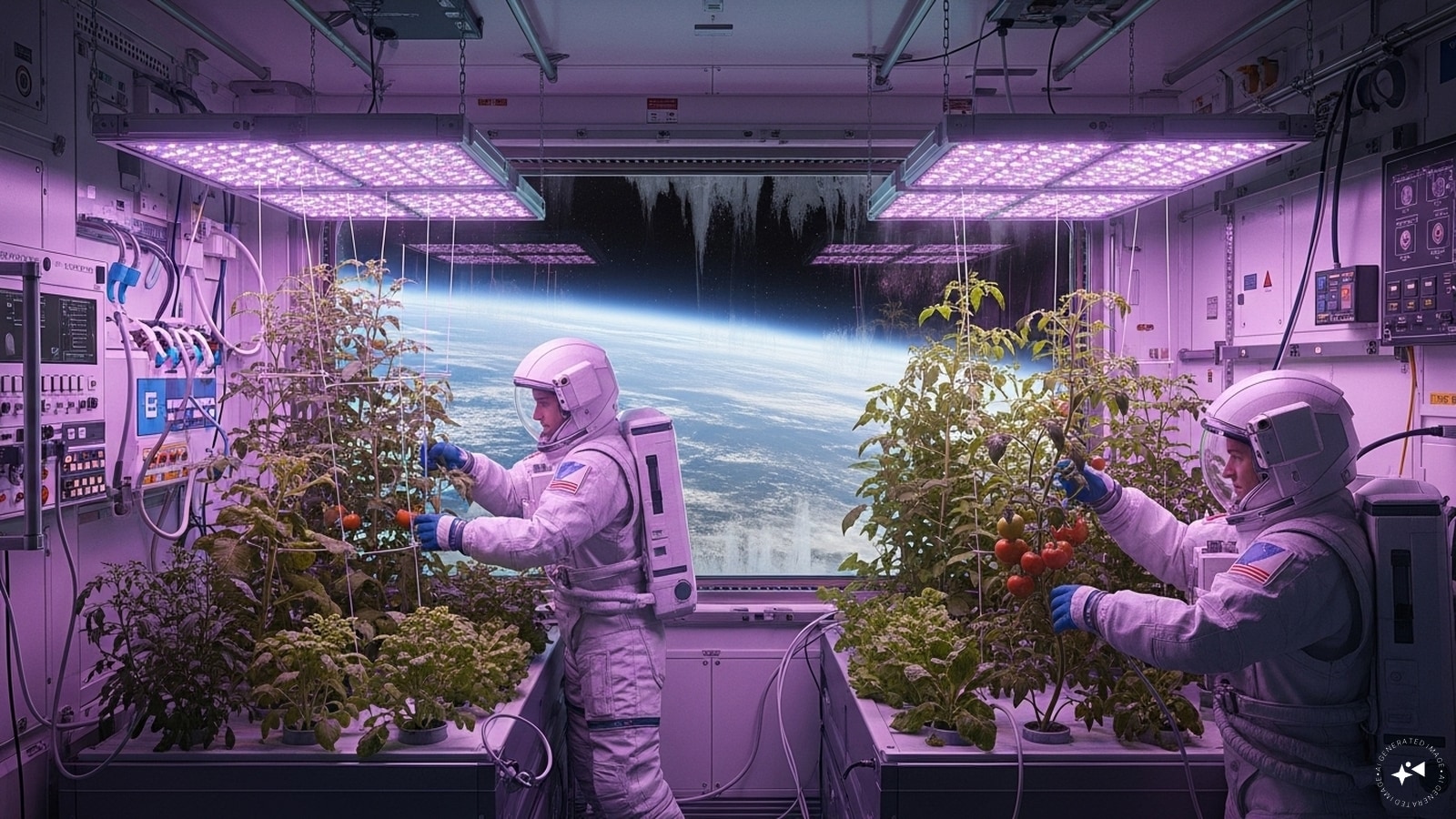
There are multiple challenges to farming in space, namely the issue of zero gravity and the lack of soil or natural light. Representational image/AI-generated
There’s also the issue of having less space and no natural light. On earth, plants have access to loads of natural sunlight. However, this doesn’t apply to space. For this reason, artificial light has to be provided, but that too is difficult owing to the importance attached to using energy efficiently. Energy can’t be wasted on light bulbs.
In addition, different types of lighting create different levels of heat, and extra heat is something spacecraft must eliminate. Additionally, astronauts don’t have extra room to lug spare light bulbs through space, so they need a lighting source with staying power, like light emitting diodes (LEDs). The confined quarters of the ISS is another challenge that astronauts have to deal with.
Besides these challenges, there’s also the problem of radiation and contamination. There’s a chance that the plants
Importance of space farming
But what purpose does growing plants in space serve?
The main benefit of growing plants in space is to enable long-term space exploration — we are eyeing longer space missions and even
Plants could also assist the life support system in other ways too. They can be used to purify water and recycle carbon dioxide into oxygen. If grown on a large-enough scale, plants could hugely impact how spacecraft and colonies are designed.
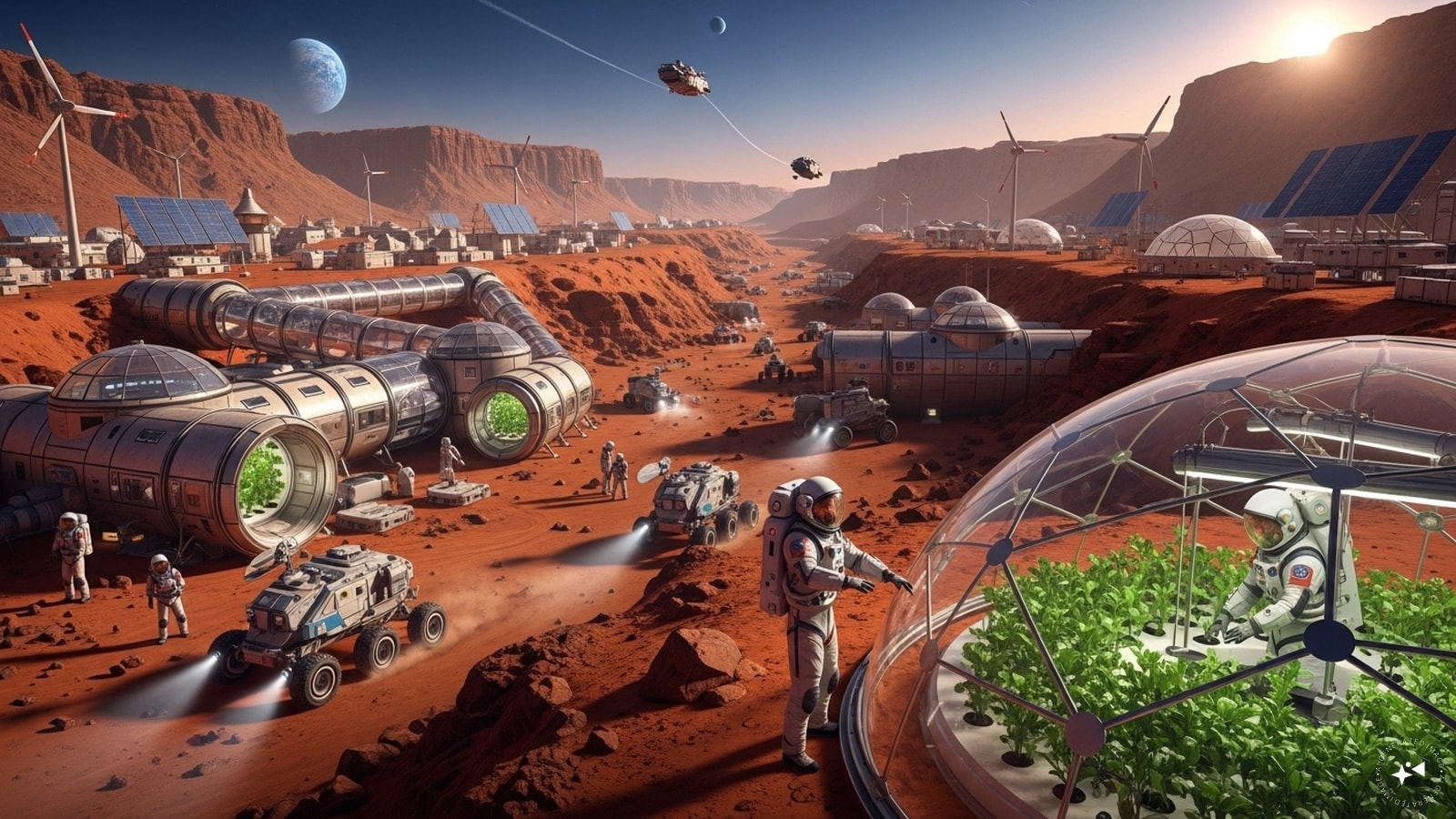
As humans
seek to further explore space and even colonise Mars, they will need a regenerative source of food. Representational image/AI-generated
As Siddharth Pandey, an affiliate research scientist with US-based Blue Marble Space Institute of Science, told The Indian Express, “Since plants release oxygen during photosynthesis, growing them in space can help keep the air aboard spacecraft breathable. Plants can recycle carbon dioxide and organic waste, creating a closed-loop life support system.”
Space
It seems that while we are far, far away from a salad bar in space, we are making giant leaps in space farming.
With inputs from agencies
